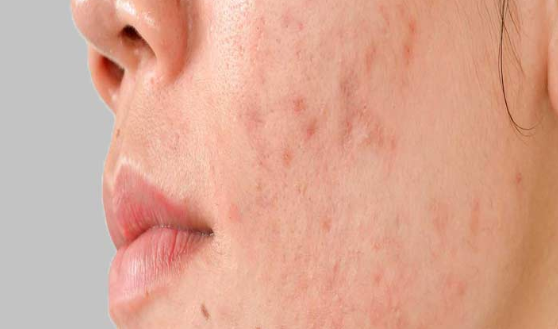Skin is the largest organ of the body which safeguards and covers the body, and helps in keeping the germs out of the body, but sometimes the skin gets infected with pathogens like bacterial or fungi and causes infection to the skin, usually when there is a cut, wound or break in the skin.
Fungi can be found in plants, soil, and even on the skin. These microscopic organisms when present on the skin typically do not cause any problems, unless they multiply faster than normal or penetrate the skin through a cut or lesion. “Fungi usually make their homes in moist areas of the body where skin surfaces meet like between the toes, in the genital area, and under the breasts”, shares the skin specialist in Bangalore, Dr. Rasya Dixit, the owner of Dr. Dixit’s Cosmetic Dermatology Clinic. Many similar fungi live only in the topmost layer of the epidermis and do not invade deeper. Obese people are more likely to get skin fungal infections because they have excessive skin folds. People with diabetes are more susceptible to fungal infections. Fungal infections can occur on any part of the body and can spread and cause rashes on other parts of the body if left untreated.
What to do if one is diagnosed with a skin infection?
Skin fungal infections are often spread through direct contact by coming into contact with fungi on clothing or other items, or a person. A skin doctor or dermatologist can look after the skin’s health and also help treat any type of skin issue effectively. If one is suffering from skin fungal infection, they can take the help of a skin doctor who can help diagnose and treat the condition.
Dr. Rasya Dixit is one of the best dermatologists in Bangalore at Dr. Dixit’s Cosmetic Dermatology Clinic, who can diagnose the source of the fungal infection and determine the best treatments to treat the issue.
Several factors can increase the risk of getting a fungal skin infection. These factors comprise:
Not keeping the skin clean and dry
Living in a warm or wet environment
Sharing items like clothing, shoes, towels, or bed
Sweating heavily
Wearing tight clothing or footwear that does not breathe well
Taking part in activities that involve frequent skin-to-skin contact
Coming into contact with animals that may be infected
Having a weakened immune system due to immunosuppressant drugs, cancer treatment, or other medical conditions.
Types Of Fungal Skin Infections:
Athlete’s foot – Athlete’s foot is a fungal infection that affects the skin on the feet, often between the toes. Symptoms of athlete’s foot include itching or a burning stinging sensation between the toes or on the soles of the feet, skin appears red, scaly, dry or flaky, and cracked skin. The infection can also spread to other areas of the body. Examples include the nails, groin, or hands.
Ringworm – Ringworm is a common fungal skin infection and is highly contagious. Though it is not serious and can usually be treated with an antifungal cream. It is caused by a fungus and not by a worm. It ordinarily occurs on the torso and limbs. The main symptom of ringworm is a ring-shaped rash with moderately raised edges. The skin inside these circular rashes usually looks healthy. The rash can spread and is frequently itchy.
Jock itch – Jock itch is a fungal skin infection that affects the area of the groin and thighs. It is most common in men and adolescent boys. The main symptom is an itchy red rash that typically starts in the groin area or around the upper inner thighs. The rash may get worse after physical activity and can spread to the buttocks and abdomen. The affected skin may also appear scaly, flaky, or cracked.
Cutaneous candidiasis – Cutaneous candidiasis is a skin infection caused by Candida fungi. Candida skin infections occur in areas that are warm, moist, and poorly ventilated. Areas that can be affected incorporate under the breasts and in the folds of the butt. The symptoms of a Candida infection of the skin can include a red rash, itching, and small red pustules.
Nail fungus – Onychomycosis is a fungal infection of the nails. It can affect the fingernails or the toenails, while infections of the toenails are more common. The candidate may have onychomycosis if they have nails that are discolored, typically yellow, brown, or white, brittle, or break easily and thickened.
Treatment For Fungal Skin Infection Offered By Dr. Rasya Dixit:
Based on the individual concern the treatment may vary:
Antifungal drugs are used to treat fungal skin infections. The ones applied directly to the infected area are called topical drugs. Topical drugs include gels, lotions, creams, or solutions.
Antifungal drugs may also be taken orally. Dr. Rasya Dixit, a skin expert in Bangalore may prescribe corticosteroids to relieve inflammation and itching for some fungal infections. Lasers for fungal infection treatment are also offered in case of severe issues.
Safety Measures For The Prevention Of Skin Fungal Infection:
Cleaning the skin with mild soap and water
Maintain hygiene by washing hands frequently. Clean hands prevent the transfer of germs to the face or other parts of the body
Cover the cuts with a band-aid or get regular dressings done
Do not scratch the itches
Get the vaccinations done for diseases like chickenpox, human papillomavirus, shingles and measles to maintain skin health and immunity.
People may use measures such as keeping the infected area dry by applying powders
To know more about skin health and other skin issues treatment. Consult Dr. Rasya Dixit at Dr. Dixit Cosmetic Dermatology Clinic, skin clinic in Bangalore.




No comments:
Post a Comment